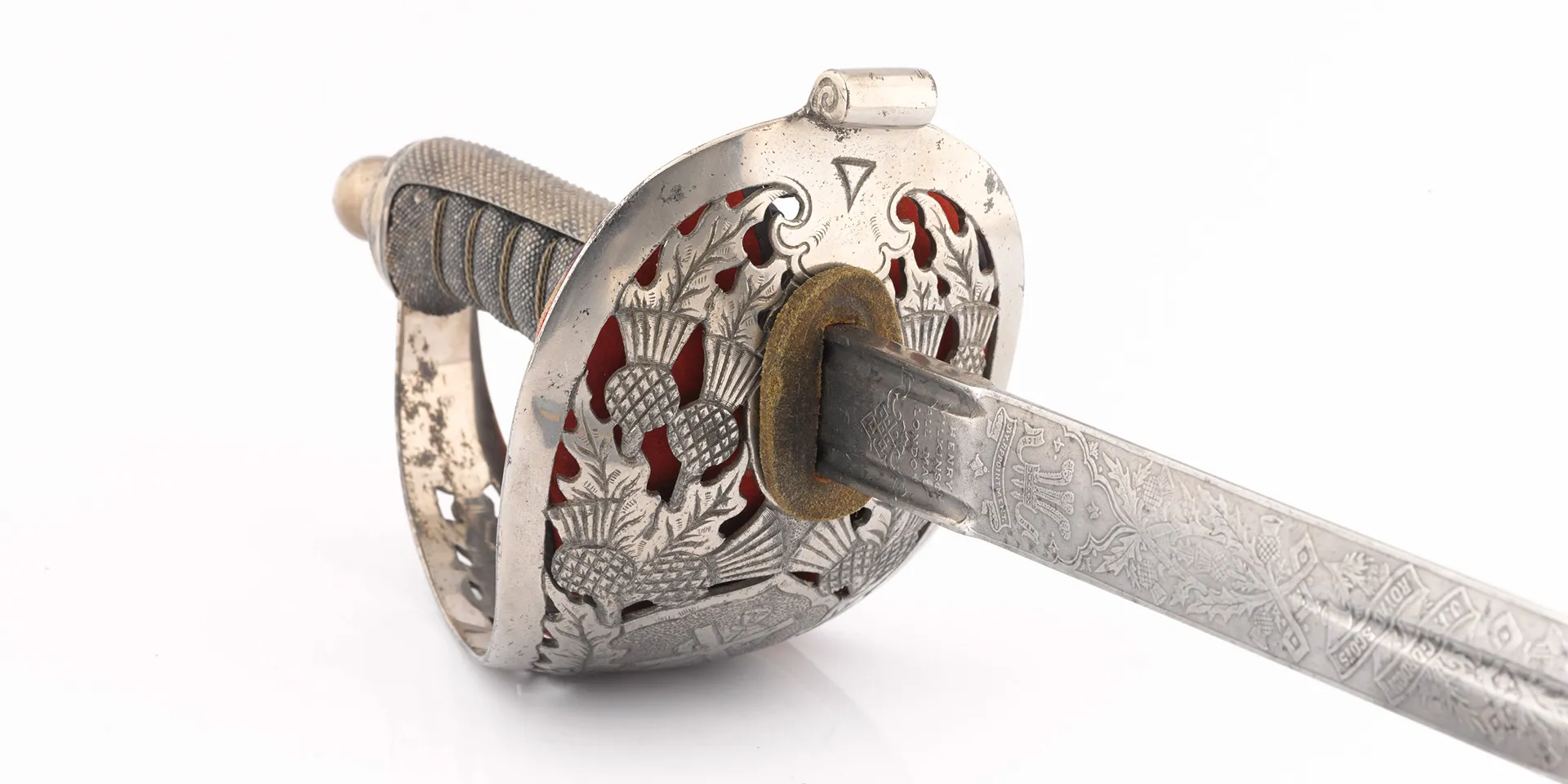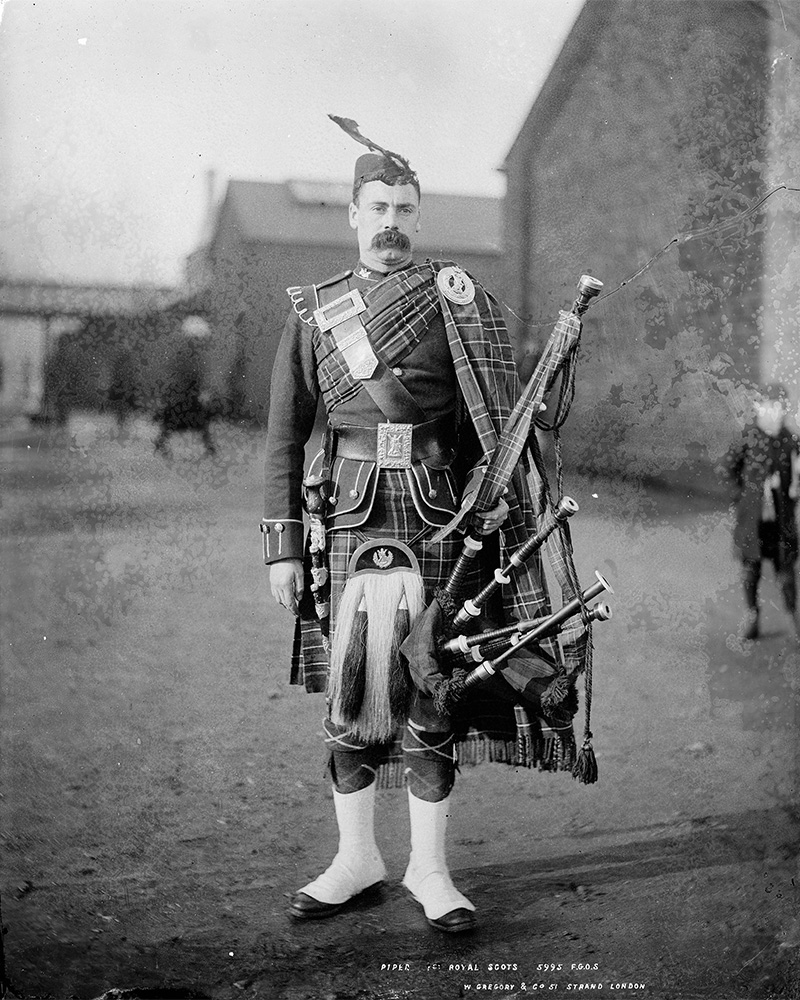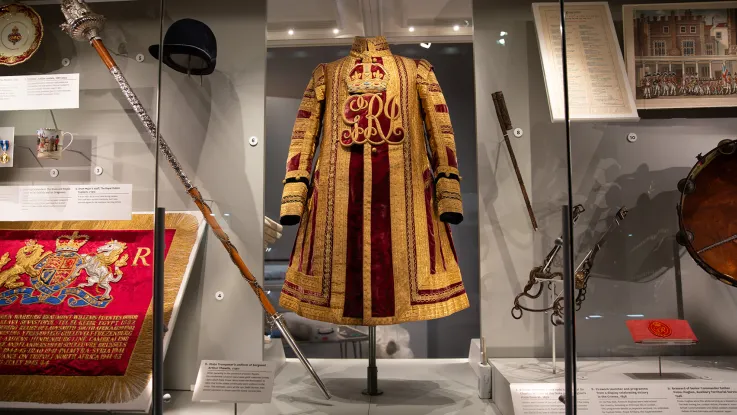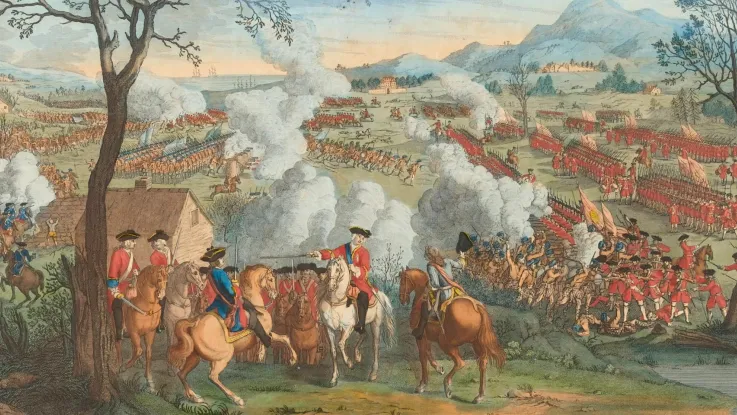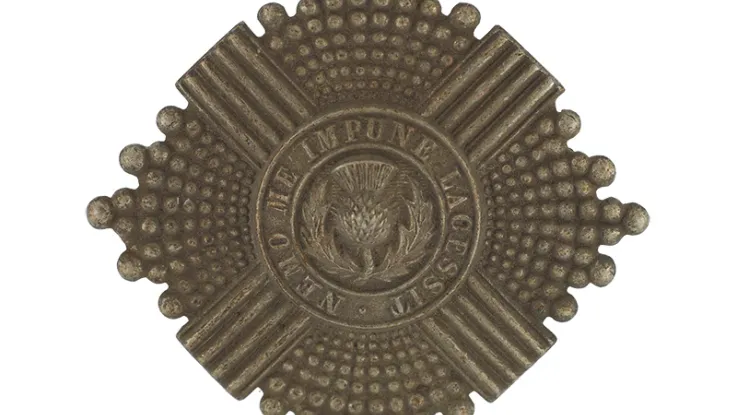Broadsword
This is a Scottish officer’s broadsword dating from the early 1900s. Its blade is etched with the name of its original owner, JFS Gordon, and decorated with regimental details of The Royal Scots (Lothian Regiment). Similar swords were carried by officers of other Scottish units, bearing the appropriate regimental markings.
The Royal Scots was the Army’s oldest regular infantry regiment. Raised under royal warrant in 1633 for service in the Scottish Army, it was moved onto the English establishment in the 1660s, following the restoration of King Charles II.
In 2006, after 373 years’ distinguished service, it merged with the Army’s five other Scottish infantry regiments to form The Royal Regiment of Scotland.
Identity
The history of The Royal Scots exemplifies how the British Army brought together separate forces from England, Wales, Scotland and Ireland. These were merged to form an institution which celebrated and preserved national, regional and local identities through the regimental system.
This sword bears several markers of Scottish identity. It's decorated with traditional symbols like the thistle (Scotland’s national flower) and the figure of St Andrew (the patron saint of Scotland) with his saltire cross.
The blade's design is based on the traditional Highland broadsword. Following the Jacobite defeat at Culloden in 1746, Highland culture had been suppressed. However, it underwent something of a revival in the 19th century, a period when military reforms were actively strengthening regiments’ links with their local communities.
Although The Royal Scots was a Lowland regiment, all Scottish units had begun to adopt elements of Highland Dress by the 1880s.
Also depicted on the blade is a boar’s head, a symbol taken from the coat of arms of the Gordon family. The boar featured on the coats of arms of many Scottish clans to signify bravery.
Maker’s mark
Other etchings relate to the sword’s manufacturer, Henry Wilkinson of Pall Mall, London. A proof mark at the base of the blade, surrounded by a double triangle design, serves as a guarantee of quality.
The Prince of Wales’s feathers and the royal coat of arms, on either side of the blade, indicate that Wilkinson was the holder of a Royal Warrant of Appointment. This was originally granted in 1863 by the Prince of Wales, the future King Edward VII.
A brief history of Wilkinson’s swords
Henry Wilkinson took over his family's weapons business in 1824. His maternal grandfather, Henry Nock, had started out in gun manufacturing, becoming royal gun maker to King George III in 1804. His father, James Wilkinson, had then branched out into bayonets, before Henry himself began to focus on developing stronger blades.
As well as injecting a renewed spirit of innovation, Henry moved the business to new premises on London's Pall Mall, close to the Board of Ordnance's main offices. The company went from strength to strength, becoming the official sword and gun maker to Queen Victoria. In the second half of the century, it switched solely to the production of edged weapons as the British government started manufacturing its own firearms.
In 1889, the company was formally incorporated as Wilkinson Sword. The following year, it started producing razor blades, a specialism for which it is now famous around the world. Despite diversifying its product range according to demand, the company continued to craft ceremonial and commemorative swords until 2005, maintaining a near-200-year tradition.
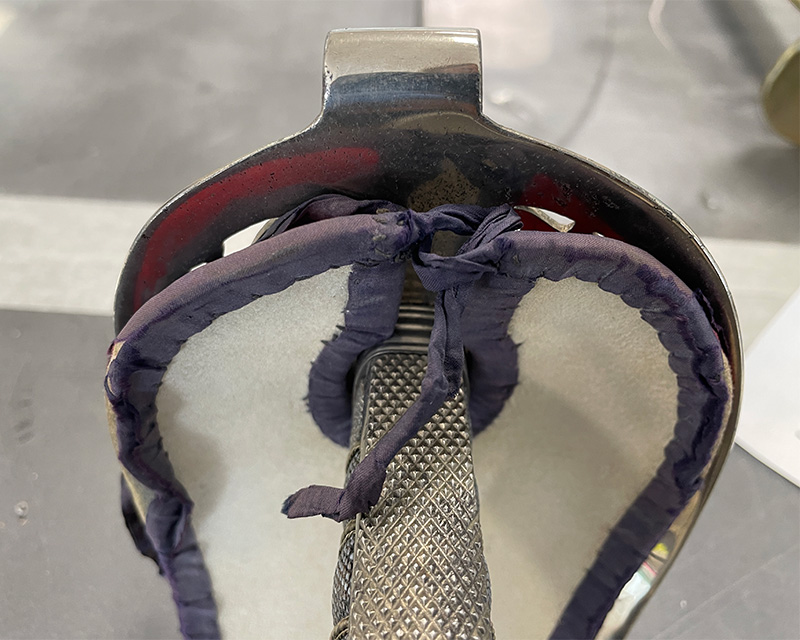
A view of the sword guard's liner before treatment
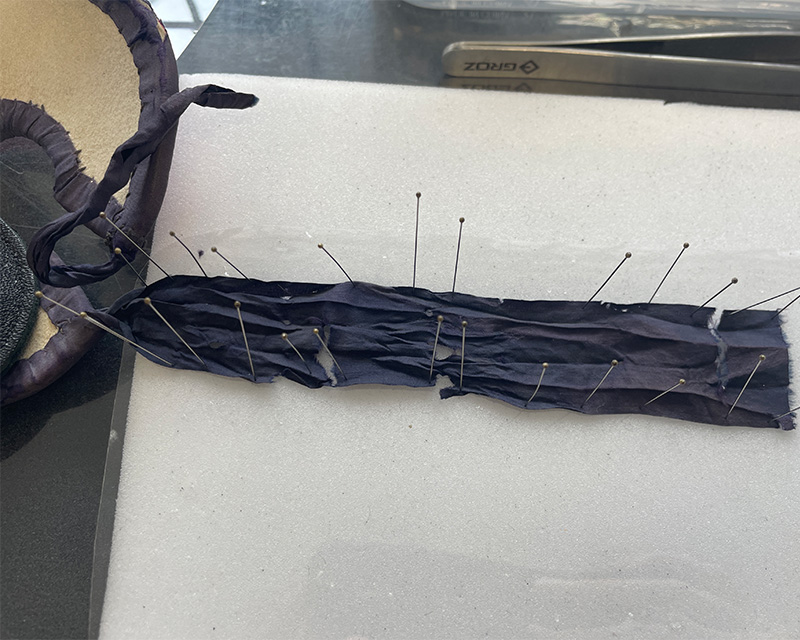
Entomological pins being used to tension and reduce creasing to the ribbon following humidification
Intervention
Before going on display in our Army at Home gallery, the buff leather and textile liner for the sword’s guard required some interventive treatment to make it more stable. The silk edging and ribbons were extremely creased. The ribbons also appeared to have a number of tears.
First, the silk was humidified to reduce the creasing and then weighted to flatten. The silk edges of the liner were overlaid for support using conservation grade dyed nylon net, which was then stitched in place.
The tears to the silk ribbons were supported using a purple dyed silk crepeline, which was attached using a combination of an adhesive and stitching to the edges.
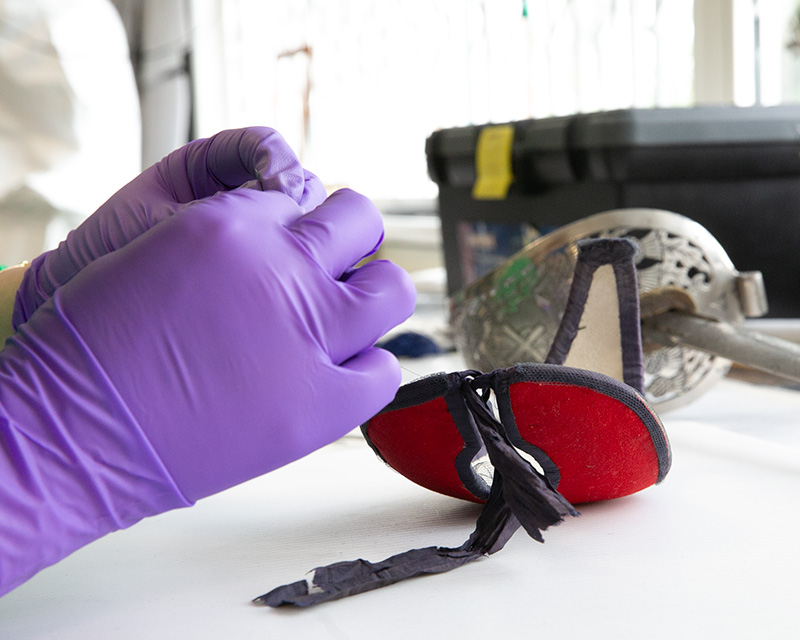
The net overlay being stitched to the silk edging
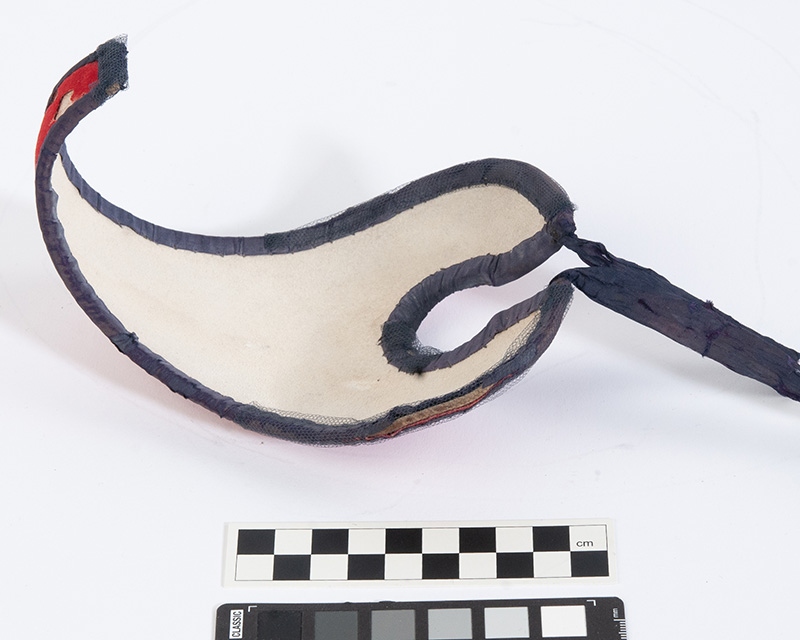
The treated liner with net overlay and finished ribbons
See it on display
Come and see this ornate expression of Scottish identity in our Army at Home gallery. You'll find it displayed alongside other items that demonstrate the British Army’s ability to unite people of different nationalities, while preserving and celebrating their differences.

